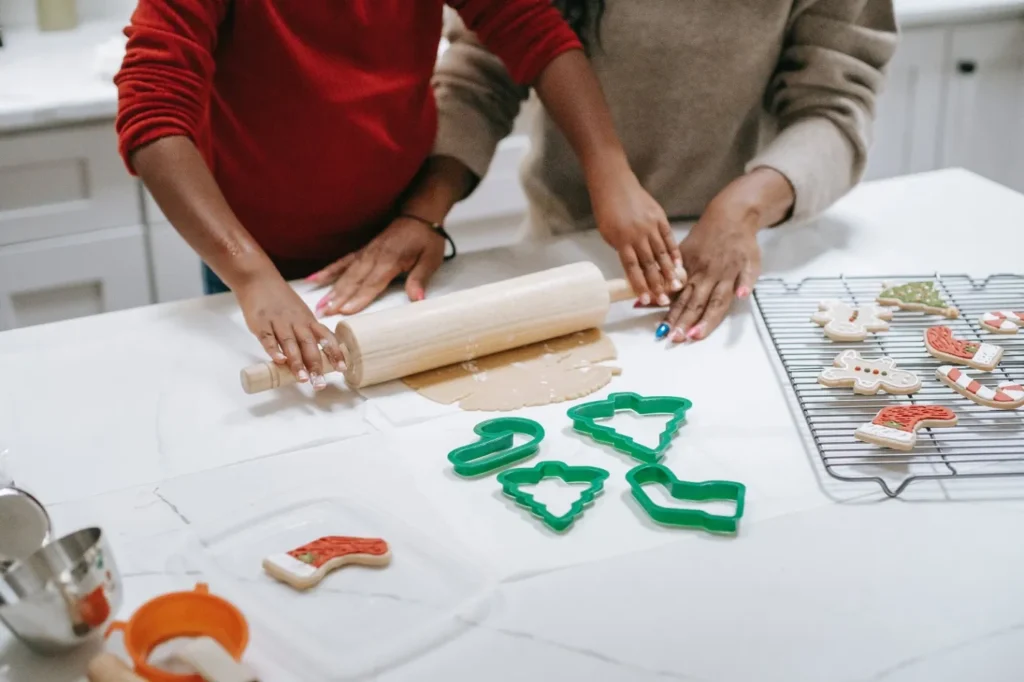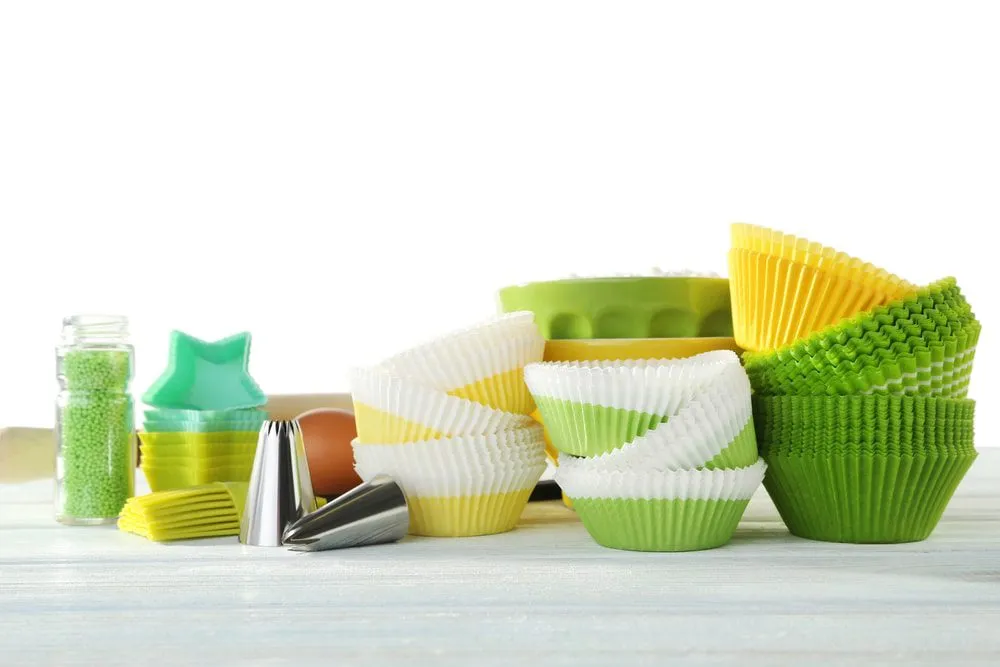Have you ever wondered if silicone is actually a sort of plastic? If so, you are not alone. This is a frequently asked question when discussing the materials used to manufacture everyday objects ranging from kitchenware to medical gadgets and more.
The misconception is understandable, as both materials share many features and applications while being fundamentally different.

Although they are occasionally used synonymously in informal discussions, silicone and plastic are made of different materials. Whereas silicone is a synthetic material composed of silicon, oxygen, carbon, and hydrogen, plastic is mostly produced from petroleum. Their distinct qualities and suitability for particular purposes are a result of the variations in their main constituents.
In this article, we explore their properties and compare their advantages and disadvantages. Whether you’re a product designer looking to make an informed material choice or a curious consumer interested in the products you use daily, this read offers valuable insights.
What is Silicone?
Silicone primarily consists of silicon derived from silica a sand-like element. Silicon is the second most abundant element in the earth’s crust after oxygen. Silicone material is man-made and comprises silicon, oxygen, and other elements like hydrogen and carbon.
Many people view and use silicone products as non-plastic alternatives. They consider silicone products as better alternatives to plastic products, especially for zero-waste products in the kitchen and for food storage. Unlike plastic, silicone does not contain a large number of elements that can cause food poisoning.
Silicone products, in itself, create little to no environmental damage; nevertheless, many manufacturers use a silicone manufacturing method that heavily relies on petroleum and natural gas, and the manner in which they obtain the hydrocarbons can have substantial environmental consequences.
Silicone is a versatile material because we can use it in several forms. There can be silicone in rubber form, hard form, and liquid form.
We all can agree that silicone is one of the best materials you can make use of. For starters, silicone is known to be strong and highly resistant to various forms of wear and tear, particularly extreme heat. Then it is known to be hygienic and clean, and therefore safe for various uses, including for food and beverages.
Furthermore, it has also been noted that silicone is quite versatile. Silicone is applicable in products ranging from lubricants to adhesives, electrical and electronic installations, and even medicines. It can also exist in a fairly wide variety of formats. Silicone is also widely used in lubricants, adhesives, electrical and electronic installations, and many others.
However, despite all of these advantages and numerous applications, what happens when you no longer require the silicone? It could be because it has been in use for a long time and no longer serves the purpose for which it was purchased, or it may have developed flaws or become damaged. Nevertheless, you start to think of how to dispose of it.
Technically, silicone could be considered part of the rubber family. But, if you define plastics widely, as we do, silicone is something of a hybrid between a synthetic rubber and a synthetic plastic polymer. Silicone can be used to make malleable rubber-like items, hard resins, and spreadable fluids.
We treat silicone as a plastic like any other, given that it has many plastic-like properties: flexibility, malleability, clarity, temperature resistance, water resistance.
Like plastic, it can be shaped or formed and softened or hardened into practically anything. But it is a unique plastic because it is much more temperature resistant and durable than most plastics and has a low reactivity with chemicals. And while water resistant, it is also highly gas permeable, making it useful for medical or industrial applications where air flow is required. It’s also easy-to-clean, non-stick, and non-staining, making it popular for cookware and kitchen utensils.
Silicone vs. Rubber

While we’re at it, let’s talk rubber. Because silicone is a rubber-like substance many questions, is silicone the same thing as rubber?
Not exactly. Rubber is a substance that occurs naturally. Silicone is not natural. Silicone is composed of silicon and oxygen molecules, whereas rubber is composed of carbon bonds. Difference Between provides an excellent overview of both materials and even a chart that compares them for a more thorough comparison.
Essentially silicone is a synthetic rubber that holds up better to heat, fungus (hence using it in cooking utensils and kitchen materials), and chemicals. Think of it as the stronger sister to rubber.
So what exactly are silicones (or siloxanes, as their backbone chemical structure is called)?
Many appear to believe that they are a naturally occurring substance that is made entirely of sand. Not at all. Silicones are synthetic and contain a variety of chemical additives made from fossil fuels, just like any other plastic polymer. The main distinction between silicones and the typical carbon-based plastics we discuss here is that silicones contain a silicon backbone. It’s important to get the terminology right here, and there are three distinct related substances to understand:
Silica: When people say silicones are made of sand, they are not incorrect, though that’s too simplistic a description. Silica or silicon dioxide is what they are referring to. Silica is the raw material used to make silicone resins. Beach sand is practically pure silica, as is quartz.
Silicon: This is the fundamental element that forms silica, yet elemental silicon is not typically encountered in nature. In an industrial furnace, silica and carbon are heated to extremely high temperatures to create it.
Silicone (siloxane): The silicon is then reacted with fossil fuel–derived hydrocarbons to create the siloxane monomers (alternating silicon + oxygen atoms) which are bonded together into polymers to form the backbone of the final silicone resin. The quality of these silicones can vary greatly depending on the level of purification done. For example, the silicones used to make computer chips are highly purified.
Thus, while most plastics have a polymer backbone of hydrogen and carbon, silicones have a backbone made of silicon and oxygen, and hydrocarbon side groups – all of which gives them plastic-like characteristics.
Silicone is often used for baby nipples, cookware, bakeware, utensils, and toys. Silicones are also used for insulation, sealants, adhesives, lubricants, gaskets, filters, medical applications (e.g., tubing), casing for electrical components.
Is Silicone Plastic or Rubber?

Silicone is neither plastic nor rubber, although it shares properties with both.
Like plastic, silicone is versatile and can be used to make a wide range of products. But, unlike most plastics, silicone can withstand very high and low temperatures without losing its properties or degrading, which makes it more similar to rubber in this respect.
Silicone, however, is not the same as rubber. In comparison to typical rubber, it is more flexible and less prone to degradation over time. It is also UV-resistant, waterproof, and low in toxicity. This makes it a popular choice for a wide range of applications requiring flexibility and durability, including kitchen utensils, seals and gaskets, medical devices, and more.
Despite similarities to plastic and rubber, silicone is a different material with its own qualities and applications. Its versatility originates from its unique ability to integrate the finest aspects of both materials while overcoming some of their shortcomings.
Advantages of Silicone Over Plastic
Silicone offers several advantages over plastic that make it an attractive material for various applications:
- Chemically inert. Silicone is chemically stable and doesn’t react with most chemicals. This makes it safe for use in food and beverage applications, as well as in medical devices and implants.
- Low toxicity. Unlike some plastics, silicone does not release harmful substances when heated and has a lower toxicity level overall.
- Flexibility. Silicone remains flexible over a wide temperature range, making it ideal for seals, gaskets, and other applications where flexibility is required.
- Temperature resistance. Unlike plastic, silicone can withstand a broad range of temperatures without melting or becoming brittle. This makes it suitable for applications like cookware, bakeware, and other products that need to withstand high or low temperatures.
- Durability. Silicone is more durable than most plastics. It’s resistant to weathering, UV, and ozone exposure, which allows it to maintain its properties and performance over a long period.
- Easy to clean. Silicone is easy to clean due to its non-stick nature. This makes it an ideal material for kitchen utensils and other items that need regular cleaning.
While silicone has certain advantages over plastic, it is crucial to note that it also has some disadvantages, such as higher cost and non-biodegradable properties. When it comes to balancing performance, safety, and longevity, silicone is frequently a better choice for a wide range of applications.
How Safe Is Silicone?
As outlined above, silicone is a prevalent material in consumer goods, including items we use daily. However, its safety has been a topic of debate among researchers due to the presence of cyclic and linear siloxanes (silicone-based compounds). These compounds can vary in their chemical groups, particle sizes, and molecular weight, affecting the safety of silicone products. They are often found in skincare, hair products, and cosmetics and have raised concerns regarding human health and the environment.
Food-grade silicone undergoes a purification process that removes low molecular weight siloxanes, making it suitable for direct food contact. Medical-grade silicone is significantly purer and is utilized for purposes such as surgical implants and dressings.
As for cooking with silicone, there’s been concern about chemical migration from food contact materials. While most studies show that this migration stays below safety limits, some suggest caution when heating above 200°C.
Silicone is generally considered oven-safe within recommended temperatures, but to be on the safe side, alternatives like glass, ceramic and stainless steel may be preferable. Most food-grade silicone items are also dishwasher safe, though handwashing is often recommended.
How to Use Silicone and Stay Safe?
The quality of the silicone product and its intended usage are key factors in determining how safely to utilize silicone. To make sure you are utilizing silicone goods safely, consider the following advice:
Clean before first use. Regardless of the type of silicone product you’re using be it bakeware, utensils, or baby items. it’s advisable to clean them thoroughly before the first use. This helps to remove any residues from the manufacturing process.
Choose high-quality silicone. Always opt for high-quality, food-grade, or medical-grade silicone products. These are made to higher standards and are typically free from harmful fillers or additives.
Check temperature guidelines. While silicone is heat-resistant, it’s essential to stick within the manufacturer’s recommended temperature range. Exposing silicone to temperatures beyond these guidelines can cause chemical migration, which could pose potential health risks.
Follow the manufacturer’s instructions. Always follow the care instructions provided by the manufacturer. These may include cleaning recommendations, usage guidelines, and storage advice.
Regularly inspect silicone products. Over time, silicone can degrade or wear down, especially if frequently used in high-temperature conditions. Regularly inspect your silicone items for signs of wear and tear and replace them as necessary.
Remember, while silicone is generally considered safe for various applications, it’s always prudent to use any material responsibly and be aware of its potential impact on health and the environment.
Is Silicone Better for Environment?

Since silicone hit the market, consumers and eco-conscious minds have been presented with the argument: is silicone better than plastic? The short answer, yes. Technically. Especially when it comes to single-use plastic. The longer answer…maybe. While the material won’t degrade into smaller pieces and it does not release toxins into the air when burned, it does still need to be recycled properly or it will last just as long, if not longer, than plastic in a landfill.
Plastic has a negative impact on the environment, as we all know, but are there any alternatives? Is silicone sustainable? More importantly, how does using and discarding silicone affect the environment?
Like anything related to the environment and sustainability, there is a great deal of debate around silicone use. In actuality, there is no right or incorrect response. However, you can choose the one that best fits your path to a more zero waste lifestyle by becoming knowledgeable about the material and how to use and dispose of it.
Is Silicone Safer Than Plastic?

Silicone is touted as a safer alternative to plastic. But is this really the case?
The stability of silicone means that it doesn’t degrade when frozen or heated making it a safer option than plastic, hence it being the foundation in many plastics free food storage containers.
And because silicone isn’t biodegradable, it’s not going to break down and release microplastic into the environment in the same way as plastic.
It also doesn’t release toxic fumes when it’s burned, unlike plastic.
However, to really understand the safety of silicone we need to dig a little deeper and review the evidence on silicone toxicity.
Final Thoughts
Different from both plastic and rubber, silicone is a special material with its own benefits and possible problems. Its robustness, resistance to heat, and adaptability make it a desirable option for a wide range of applications, from medical equipment to culinary utensils. Like any material, there are obligations associated with using it.
While silicone is generally considered safe for many uses, certain precautions should be taken. Opting for high-quality, food-grade, or medical-grade silicone, adhering to temperature guidelines, and undertaking regular inspections of silicone products for signs of wear are all practical safety measures.